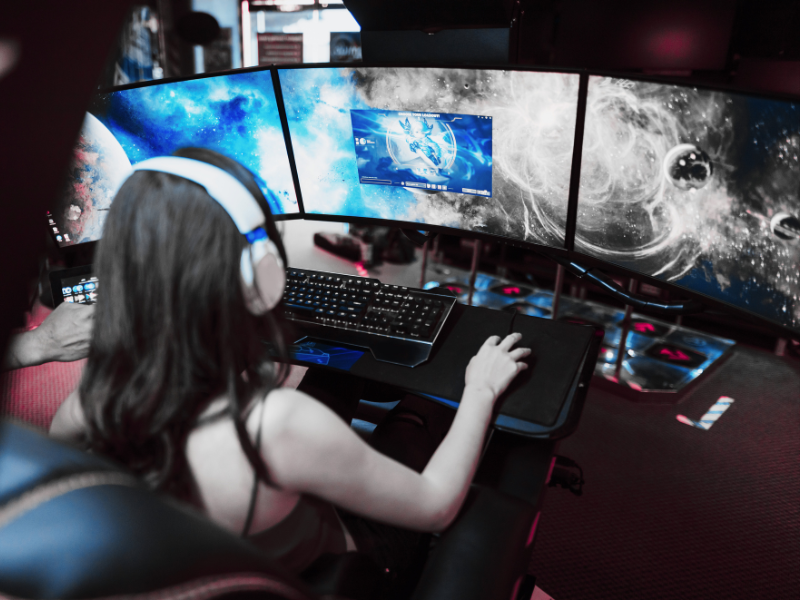Master Every Millisecond: The Complete Guide to Polling Rate in Games (2025)
Every click, every move, every ability cast—it all begins with your polling rate.
Whether you’re aiming for pixel-perfect headshots, outplaying opponents with fast combos, or micro-managing intense teamfights, the responsiveness of your setup plays a key role. Polling rate in games is a critical, yet often overlooked factor that can drastically impact how fluid and immediate your actions feel during gameplay.
In this in-depth guide, we break down how polling rate affects real-time performance across the most popular competitive games—and show you how to optimize it for your specific title, playstyle, and gear.
Click on any game to dive deeper and learn how to improve your polling rate and elevate your in-game performance:
Fortnite: Increase your polling rate to build and edit faster, eliminate input delay during clutch plays, and gain smoother aim tracking with optimized settings.
CS2 / CS:GO: Maximize aim consistency and flick precision with higher polling rates, USB tuning, and input latency tweaks specifically for tactical shooters.
Valorant: Discover the ideal polling rate setup to reduce latency on 128-tick servers, perfect first-shot accuracy, and smoother crosshair control.
League of Legends: Learn how mouse and keyboard polling rate affects ability casting, skillshot accuracy, and teamfight responsiveness in MOBAs.
Dota 2: Micro more efficiently with higher input frequency—whether you’re playing Meepo or engaging in high-APM teamfights, polling rate matters.
Call of Duty: Warzone: Optimize your controller or mouse polling rate to minimize input lag, improve ADS speed, and gain an edge in high-intensity firefights.
Each game category is packed with practical tuning tips to help you achieve peak responsiveness and dominate your opponents. 🚀 Start exploring our polling rate game guide now and take full control of your inputs!

Tip: Want to gain every possible edge? Discover our #1 gaming mouse pick for ultra-low input lag on Amazon* (Affiliate Link)!
🎯 Why Polling Rate Matters in Competitive Games
Most gamers focus heavily on frame rates and ping—but the polling rate in games is just as critical for input responsiveness. A device polling at 125 Hz sends input data every 8 milliseconds, whereas one running at 1000 Hz transmits updates every 1 millisecond. That 7 ms difference may seem small, but over the course of a match, it adds up—creating a perceptible delay between your actions and what happens on screen.
In fast-paced genres like FPS, MOBAs, and battle royales, even slight input lag can cost you a crucial flick shot, a last-hit, or a defensive build. Higher polling rates reduce this latency, giving your gameplay a tighter, more immediate feel—essential for competitive consistency and precision.
Final Thoughts – Polling Rate in Games
Polling rate isn’t just a background spec—it’s one of the most underrated performance factors in modern gaming. Whether you’re landing flick shots in CS2, editing fast in Fortnite, or making frame-perfect movements in Valorant, your device’s polling rate directly affects how fast your inputs are recognized and executed in-game.
A higher polling rate—typically 1000Hz or more—means your mouse, keyboard, or controller is sending updates to your system more frequently. The result? Lower input latency, smoother control, and a more responsive feel. In competitive environments, that can be the difference between winning and watching the killcam.
But polling rate performance isn’t only about raw numbers. It’s also about stability, consistency, and system compatibility. Your hardware, USB ports, drivers, and background processes all influence how well your devices maintain their polling rate under pressure. That’s why simply owning a high-polling device isn’t enough—you need to optimize your setup to make the most of it.
At pollingrate.com, we dive deep into how polling rate impacts real gameplay, across genres, devices, and platforms. Whether you’re a casual gamer or a competitive grinder, tuning your polling rate can lead to noticeable improvements in reaction time, control, and overall gameplay performance.
Want to play at your sharpest? Check out our full guide and make sure your polling rate setup is built for winning.
